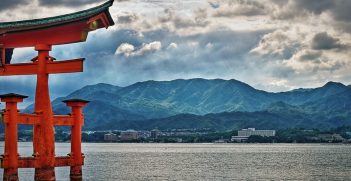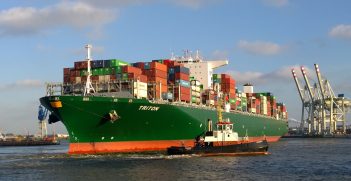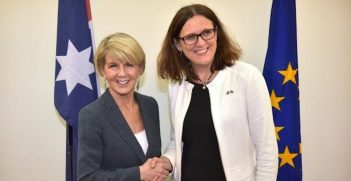When Foreign Investment Met International Trade: The Austrade Nexus

Australia’s prosperity depends heavily on strengthening its trade and investment globally and the recent convergence of the two has required serious changes at Austrade.
Austrade’s mission has always been to help increase jobs, income and overall economic growth in Australia by building markets for its exports overseas. Our network of 83 locations worldwide is an important resource for businesses looking to identify and pursue commercial opportunities offshore, especially in the dynamic Asian region.
The challenges we face in today’s rapidly changing trade and investment climate are more complex than ever. That complexity, and our response to it, has been a key focus for me since accepting the job as CEO of Austrade.
To ensure we are fit for purpose as an organisation, I’ve launched several initiatives:
- Our first ‘Ideas Challenge’—giving staff an opportunity to contribute their proposals for improving the way we work;
- An Austrade ‘Organisational Capability Assessment’—with recommendations that we expect to begin implementing very soon; and
- A ‘Pulse Survey’—to capture the perceptions of staff about how Austrade is performing.
We are also actively exploring ways to work more closely under the banner of Team Australia with other organisations like the CSIRO and our colleagues in Commonwealth, state and territory governments.
Austrade’s structure has already evolved to some extent to reflect the political, economic and technological upheavals that are shifting the global trading landscape. We now have responsibility for attracting productive foreign direct investment, promoting international education, and developing aspects of Australia’s tourism policy, programs and research.
Austrade is also exploring new territory, tapping into Australia’s thriving innovation ecosystem.
As part of the National Innovation and Science Agenda, we’ve established Landing Pads for start-up enterprises in leading centres of disruptive innovation: San Francisco, Singapore, Berlin, Shanghai and Tel Aviv.
It’s been a learning experience for us as well as the start-ups we’ve hosted, many of which do not fit the profile of a traditional Austrade client. The structure and trajectory of typical start-up differs markedly from the companies we’ve worked with in the past. So our old methods for identifying and qualifying potential clients has been disrupted, if you like.
Looking ahead, one of the big tasks for us is to better understand and exploit the subtler connections between the various elements of our broadened remit. Innovation holds the key to that. As an organisation we are already innovating and harnessing the power of new ideas to improve the way we operate.
We’ve known for quite a while, for example, that international trade and investment are becoming more closely linked. Global value and supply chains, in part enabled by technology and driven largely by innovation, have transformed production processes across a range of industries, including services. And foreign direct investment is a vital conduit for Australian companies to access them.
These two apparently distinct areas of responsibility—trade and investment—are not so distinct after all. I want us to explore the implications of that kind of convergence more fully, and better understand how our position at the nexus between trade and investment can be leveraged to benefit the broader economy.
Technology is intersecting with our work in other ways. One of the start-ups we hosted recently in Singapore has produced the first ‘gamified’ mobile learning platform for tertiary level students, Quitch. Educational technology, including applications like Quitch, is an expanding frontier for our world-leading international education sector, and will clearly be an important factor in its ongoing success.
It’s appropriate for Austrade to support not only the development of edtech but also its uptake. The latter is especially pertinent given, as our chief scientist Alan Finkel points out, a lot of the value inherent in innovation is embedded in the way we use technology to produce other goods and services not considered technological or even particularly advanced.
The use of iron ore, for example, stretches back to pre-history. Yet the Australian mines that produce it more efficiently and in greater quantities than anywhere else operate at the leading edge of robotics and automation. As Dr Finkel argues, they are every bit as advanced as a factory producing the latest generation of silicon chip, epitomising what he calls “embodied innovation”, something Australia is particularly good at.
The embodied innovation that underpins our stature as a global resource exporter also lies behind the success of our mining equipment, technology and services sector, which supports resource projects around the world.
Technological change brings disruption to established industries but it also brings opportunities. Identifying and nurturing other examples of embodied innovation will help Australia seize those opportunities and I want Austrade to be at the forefront of doing just that. Our national prosperity depends on it.
Dr Stephanie Fahey is the chief executive officer of Austrade, the Australian government agency responsible for promoting trade, investment and international education, and tourism policy, programs and research.
This is an extract from Dr Fahey’s presentation to the 2017 Australian Institute of International Affairs National Conference on Monday 16 October.
This article is published under a Creative Commons Licence and may be republished with attribution.





